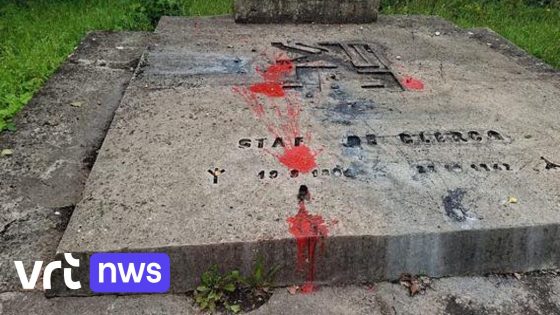In Gooik, the praalgraf (ceremonial tomb) of Staf De Clercq has been defaced with red paint, sparking local outrage. This act of vandalism targeting a controversial historical figure highlights ongoing tensions around Belgium‘s wartime legacy. The incident was reported on 2025-08-05 09:49:00, drawing attention to how communities confront difficult pasts.
- Onbekenden besmeuren praalgraf met rode verf
- Staf De Clercq was VNV-oprichter
- De Clercq collaboreerde met Duitse bezetter
- Vereniging beheert het graf
- Vereniging zal klacht indienen tegen vandalen
Staf De Clercq, founder of the VNV (Vlaamsch Nationaal Verbond), collaborated with the German occupiers during World War II. The grave, maintained by a local association, now faces legal action as they plan to file a complaint against the perpetrators. How should Belgium reconcile respect for history with accountability for collaboration?
This event raises important questions about how society deals with symbols linked to divisive figures. What message does vandalism send, and can it foster constructive dialogue?
Is vandalism the right way to address historical controversies? While emotions run high, it’s crucial to consider the implications:
- Acts like this highlight unresolved issues around collaboration during WWII in Belgium.
- They can provoke public debate but also risk deepening divisions.
- Legal responses demonstrate the community’s desire to uphold order and respect for sites, regardless of historical complexities.
- Such incidents encourage reflection on how to educate future generations about a difficult past.
Moving forward, fostering open dialogue and education around controversial historical figures like Staf De Clercq may help build understanding rather than division. How can Belgian society best honour history while promoting unity?































